Since I had booked a week of full treatment at the “Special Hospital for Rehabilitation Banja Koviljača” (“banja” means spa in Serbia and therefore I came to Spa Koviljača) I came to the spa earlier in the morning of the first day in order to register. I got a room and then went to a doctor for a check-up. After she had decided on the mixture of therapies, a nurse took me around different facilities belonging to the hospital in order to show me what was where and in order to book the time slots for my therapies.
Namely, although I had no major symptoms I decided to come to the spa – preventively. I mean, if people, including also very young ones, can go for different treatments for detox and skin and body toning, or undergo plastic surgery procedures, or go for different rehab treatments, etc., I guess at my age and without any real need I can go to a spa for medical treatments. After all, if I cared about fashion and trends, I could also say that I went to a spa centre, because that’s the synonym of where I actually went.
On the other hand, this was more of an experiment – to see if I would like the stay in a spa and I also thought that I could have my base here from where I could do the sightseeing of the surrounding area. My logic was, if I liked it, I could go to a different spa every year and also visit that part of Serbia.
As for Banja Koviljača (Бања Ковиљача), I have heard only praises about it and it is specialised for bone and joint problems, so I decided to come here first because certain problems started to appear in these parts of my body since the year before.
People here often stay at different hotels or private accommodation in the spa town, while coming to the hospital where they use the services as outpatients. I wanted on purpose to stay at the hospital’s hotel, where I had my own room and full board, and in addition to a doctor’s appointment at the beginning and at the end, the price also included four therapies as advised by the doctor. I took a fifth one as well, as an addition, while inquiring around. Apparently, one can never overdo it with pampering oneself.
The small town of Banja Koviljača is, as its name says, a spa. It is situated in the far west of Serbia, some of its peripheral sections include the banks of the Drina river and the border with Bosnia and Herzegovina, and it is merely some 7 km away from a slightly bigger town of Loznica.
Although there is evidence that the area around Banja Koviljača was inhabited already during the Roman times, the settlement was officially first mentioned in the first half of the 16th century. It appears in the written sources later as well, of course, but it is important that throughout the history it was known as the place where there are springs of healing water, as well as healing mud. Because of the presence of hydrogen sulphide, the smell of which reminds of rotten eggs, over time the settlement in the past got an unflattering alternative name – Smrdan banja (Stinking spa).
The first, modest steps in a more contemporary development of the spa were made only around the middle of the 19th century. There is a note from 1858 which says that “it is the obligation of the physician to sit in the spa during summer, look after the ailing and prescribe to them duly and in accordance with the medicinal rules the use of the water.”
The full development of the spa started only at the beginning of the 20th century. A particular emphasis is often put on the role of King Peter I Karađorđević who, after ascending to the throne in 1904 came here and initiated the construction of the baths, the park, a building for the accommodation of guests, etc. Thus, the spa’s baths are called the King Peter I Baths and judging by the inscription on the door, the construction lasted from 1904 to 1908. In addition to the sincere desire of the king to see the development of this place, he also had a “hidden” motive – namely, he himself suffered from rheumatism.
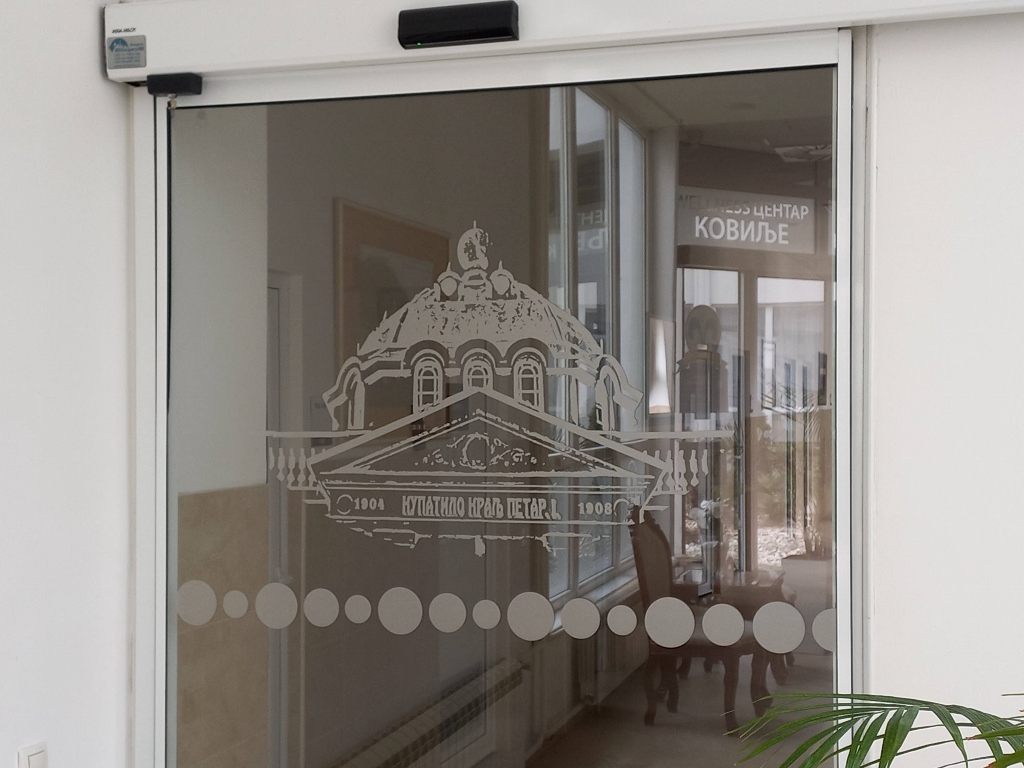 Entrance into the King Peter I Baths in Banja Koviljača
Entrance into the King Peter I Baths in Banja Koviljača
So, Banja Koviljača is the place that treats all kinds of rheumatic ailments, post-traumatic states, states after the spine surgery and the hip and knee replacements, etc., and the main centre for the spa medical treatment is precisely the “Special Hospital for Rehabilitation Banja Koviljača.” A large number of patients come here thanks to their health insurance, but some, like me in this case, come here privately and pay for the services they use themselves.
The hospital and its facilities, including also the accommodation buildings, are located at the perimeter of a very pretty spa park which in a way constitutes the central section of the entire town.
 Spa Park in Banja Koviljača
Spa Park in Banja Koviljača
Since I walked and took photos here often, I will use photographs made on different days, in different weather conditions. I’m saying this simply lest there be any confusion – the weather in Banja Koviljača changes equally fast or slowly like in any other place.
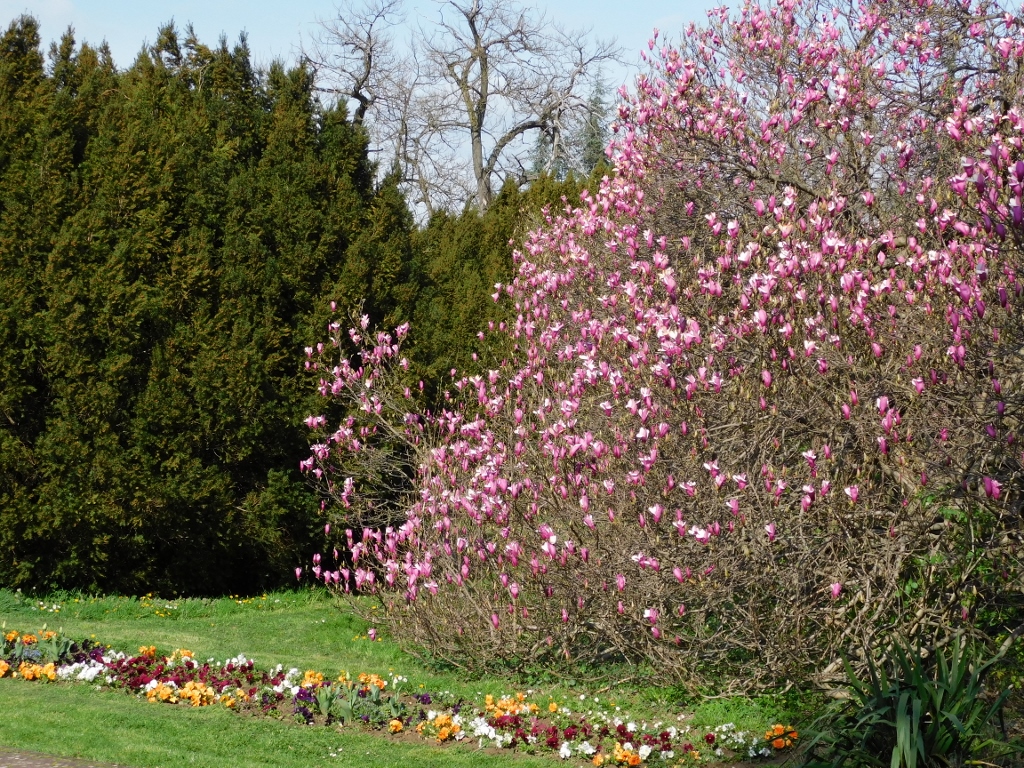 Spa Park in Banja Koviljača in spring
Spa Park in Banja Koviljača in spring
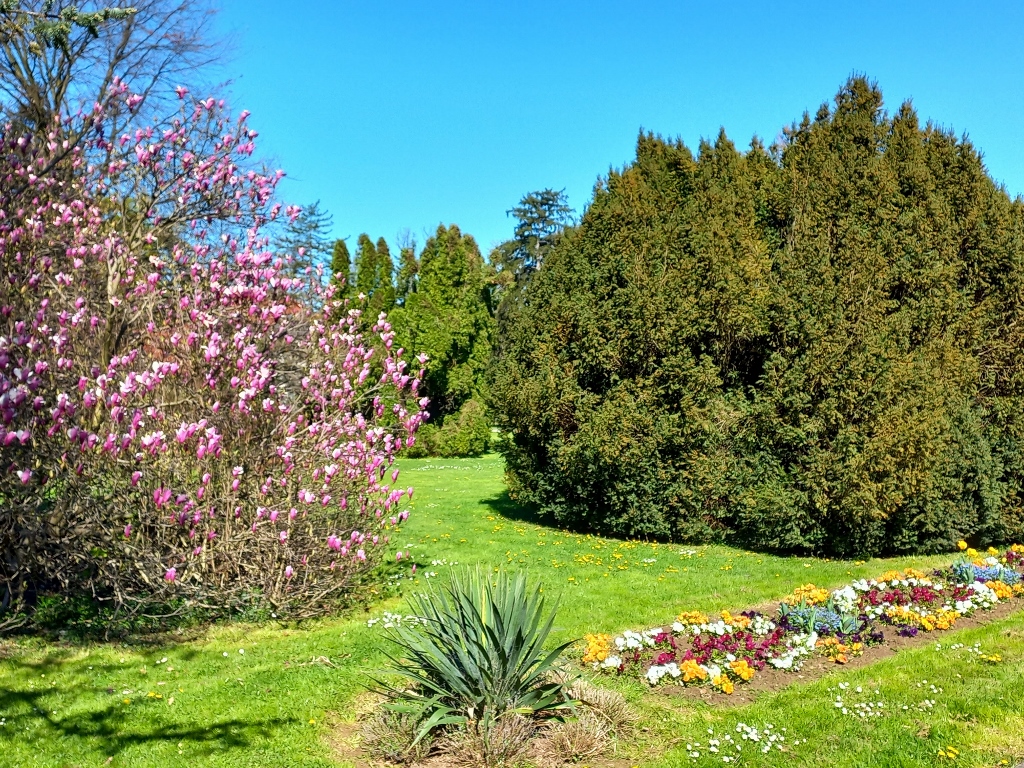 Spa Park in Banja Koviljača in spring
Spa Park in Banja Koviljača in spring
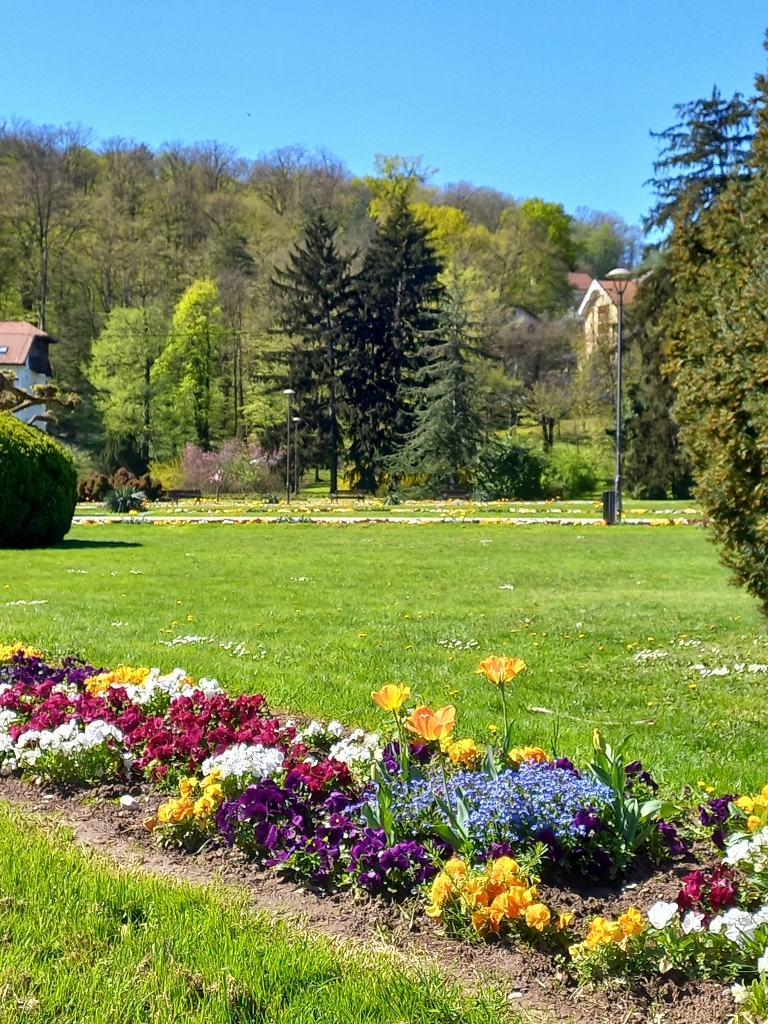 Spa Park in Banja Koviljača in spring
Spa Park in Banja Koviljača in spring
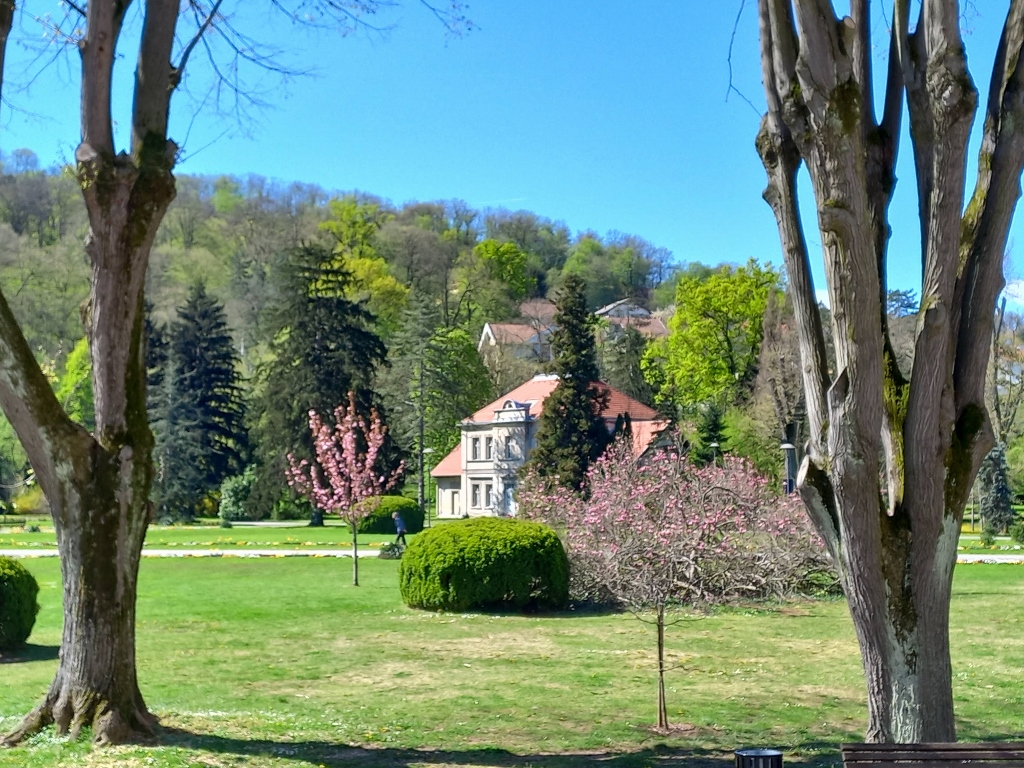 Spa Park in Banja Koviljača in spring
Spa Park in Banja Koviljača in spring
The additional evidence of the impact King Peter I Karađorđević (1844-1921) had on the development of the spa can also be a photo of a pine tree which is said to have been planted by the king himself, meaning that the pine is over 100 years old.
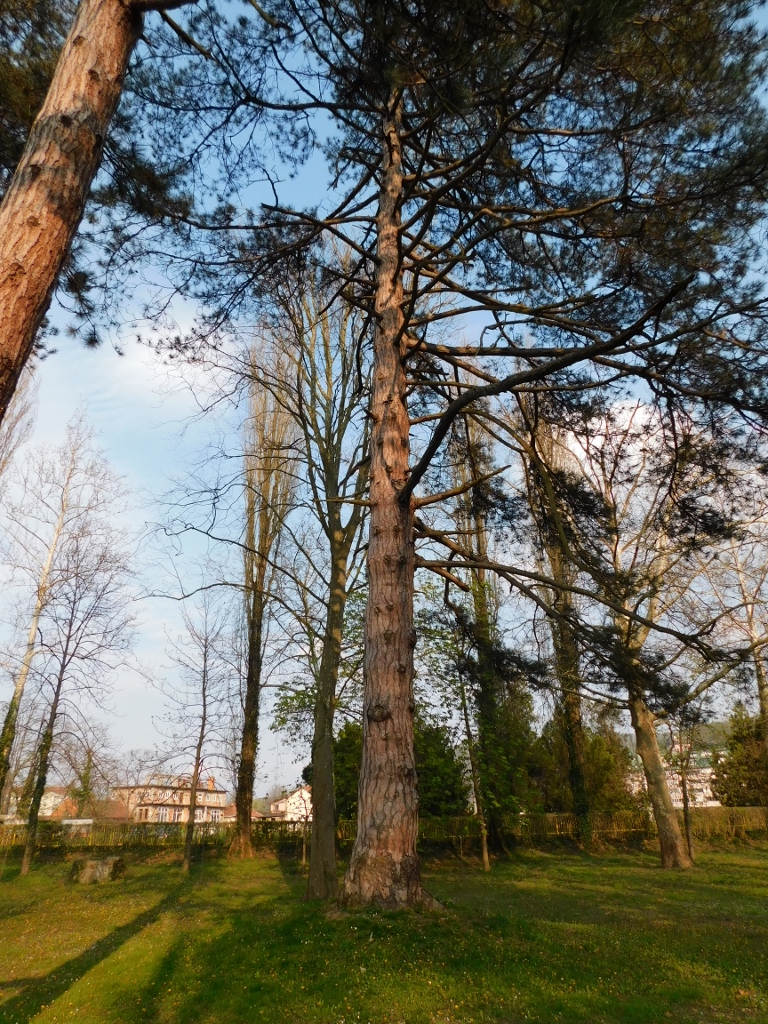 Pine tree in Banja Koviljača’s park planted by King Peter I
Pine tree in Banja Koviljača’s park planted by King Peter I
As I’ve said, the hospital and its different sections are located along the perimeter of the park from where mount Gučevo starts.
 Spa Park and the initial slopes of mount Gučevo
Spa Park and the initial slopes of mount Gučevo
 Two hospital wings with a restaurant in-between
Two hospital wings with a restaurant in-between
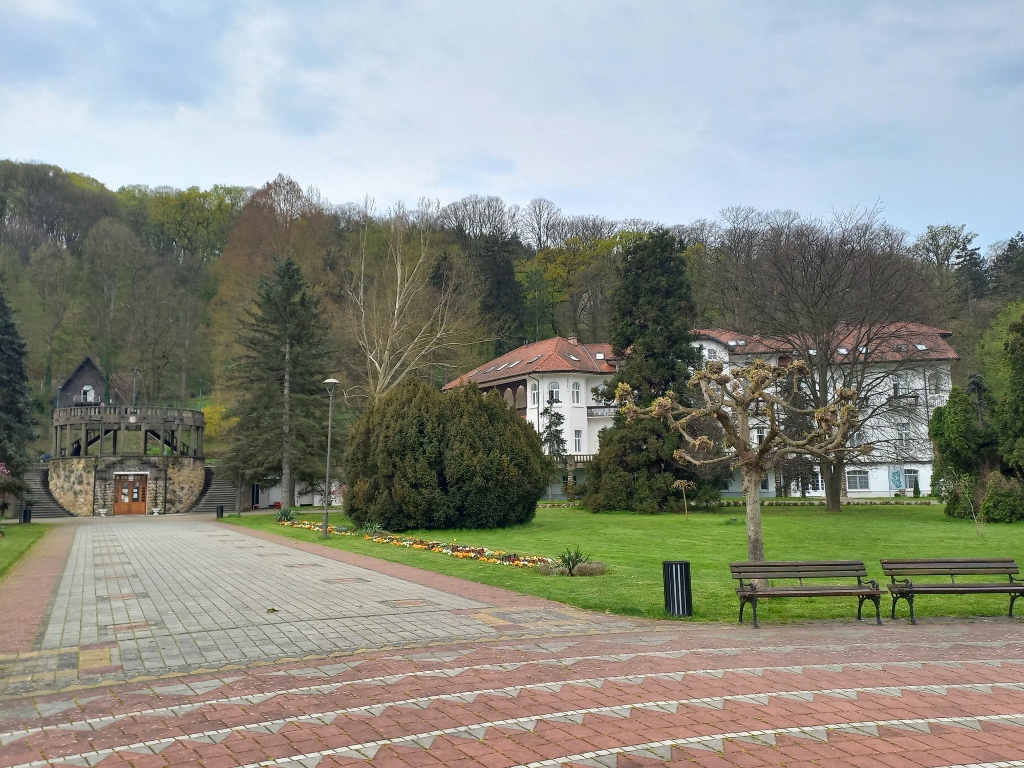 The restaurant can be seen better here
The restaurant can be seen better here
The two hospital wings (the white buildings in the photos) even today carry the names given to them when they were first built – Hotel Hercegovina and Hotel Dalmacija. Since these facilities were built in the period between the two world wars, I presume that the names were given in order to honour the new, joint state of Yugoslavia and some of its regions. Nowadays, Herzegovina is a part of Bosnia and Herzegovina, while Dalmatia is a part of Croatia. I am glad that when Yugoslavia dissolved nobody had the “bright” idea (maybe somebody did, but it failed) to change the names of the hotel segment of the spa’s hospital. Some things should be left where they belong and in this case it is the past.
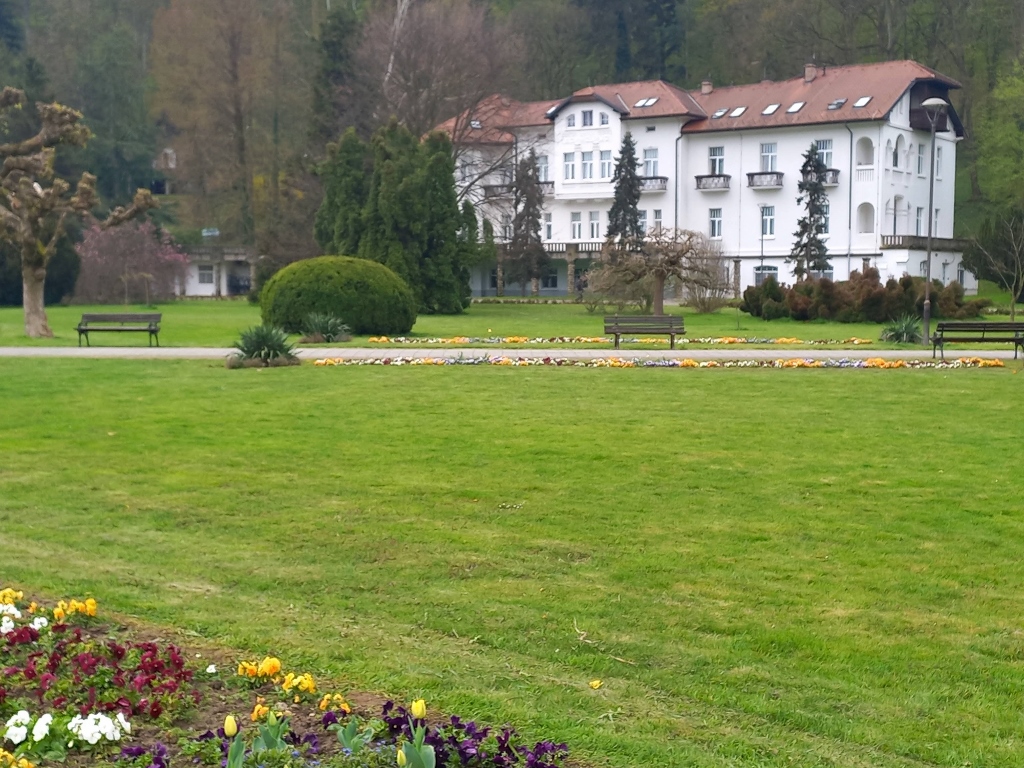 Hotel Dalmacija
Hotel Dalmacija
I must admit that I quite liked and enjoyed the therapies prescribed to me by the doctor. Some of those I had already had before, while some were new. But, in addition to dealing with the physical aspects of health, the hospital, I would say, also takes care of some spiritual aspects. Thus, for instance, there is a small chapel at Hotel Dalmacija, but also all over the hallways and rooms there are different artistic paintings that decorate the walls and bring beauty into the space, as well as framed quotes of well-known or unknown authors. I decided to take photos of a couple of those that can be found on the walls belonging to the hospital’s facilities.
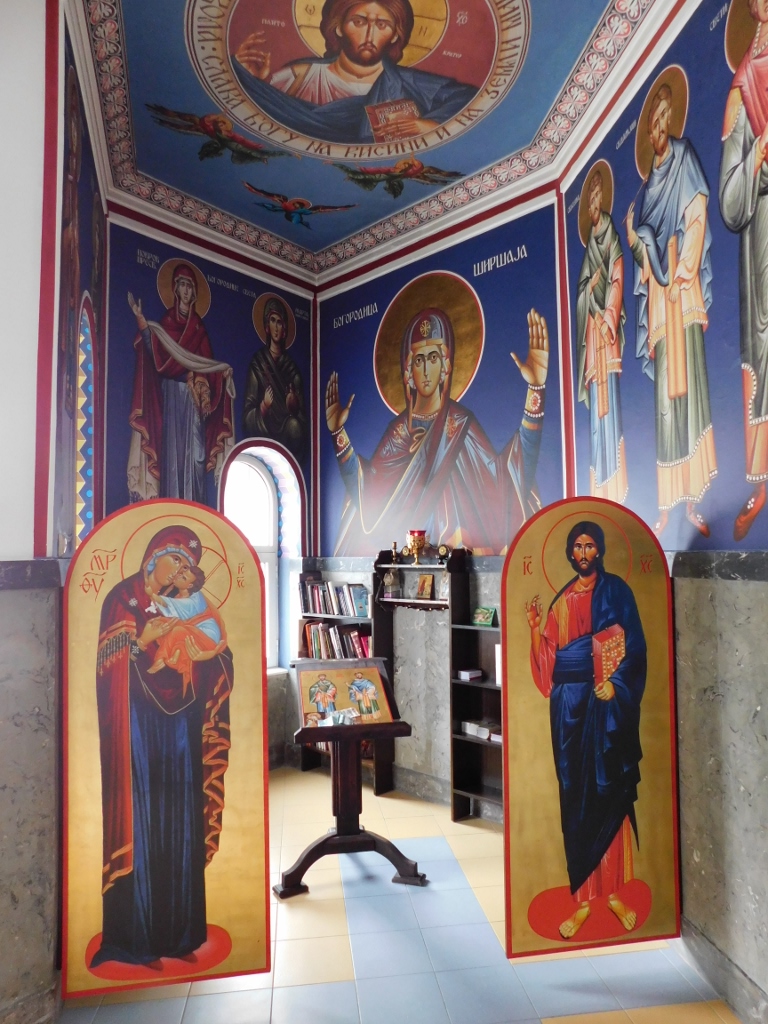 Small chapel at Hotel Dalmacija
Small chapel at Hotel Dalmacija
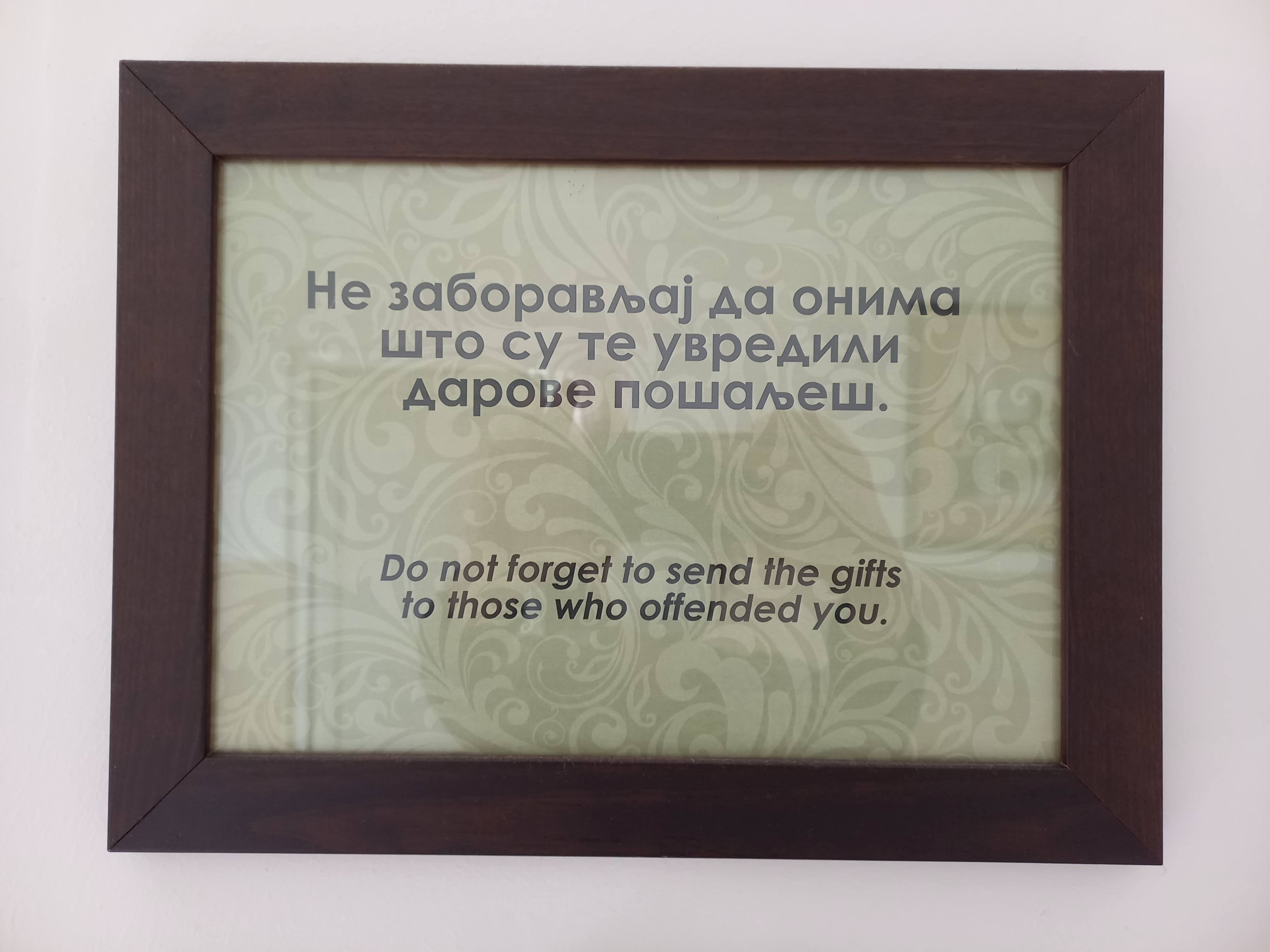 Reminder for living
Reminder for living
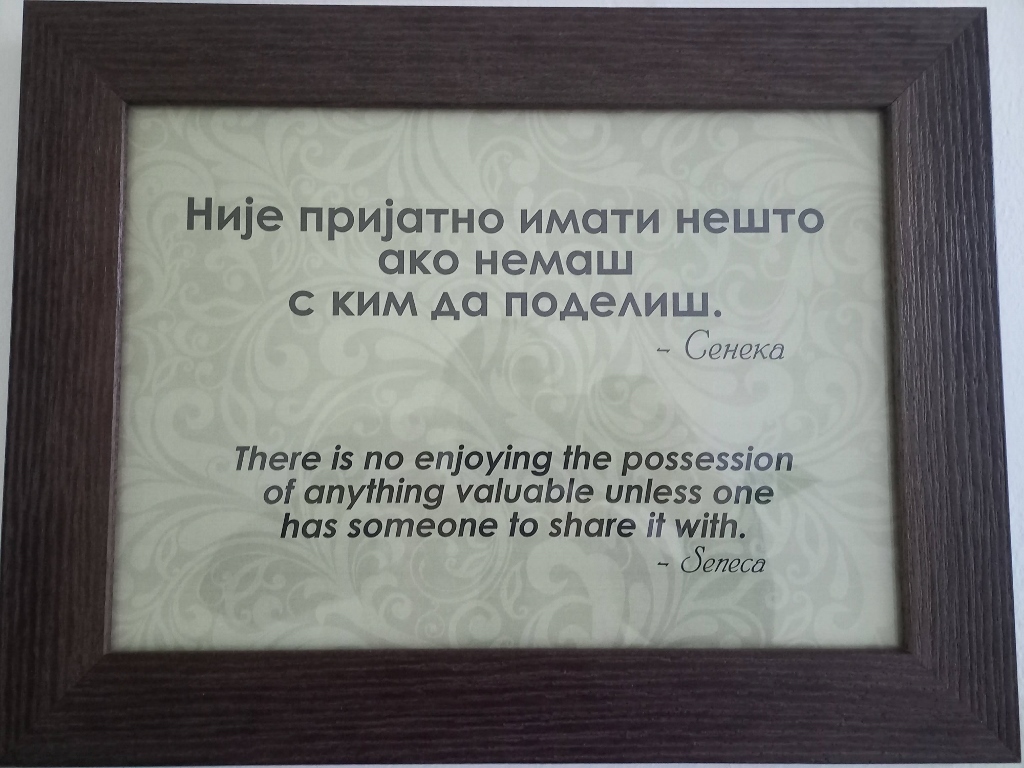 Reminder for living
Reminder for living
Also, within the hospital there is a modern Wellness Centre, with a swimming pool and a large number of different services that are available – from various massages to detox treatments, as well as from hairdresser to beautician. This part is open to all, but the entrance and all those different services are paid separately.
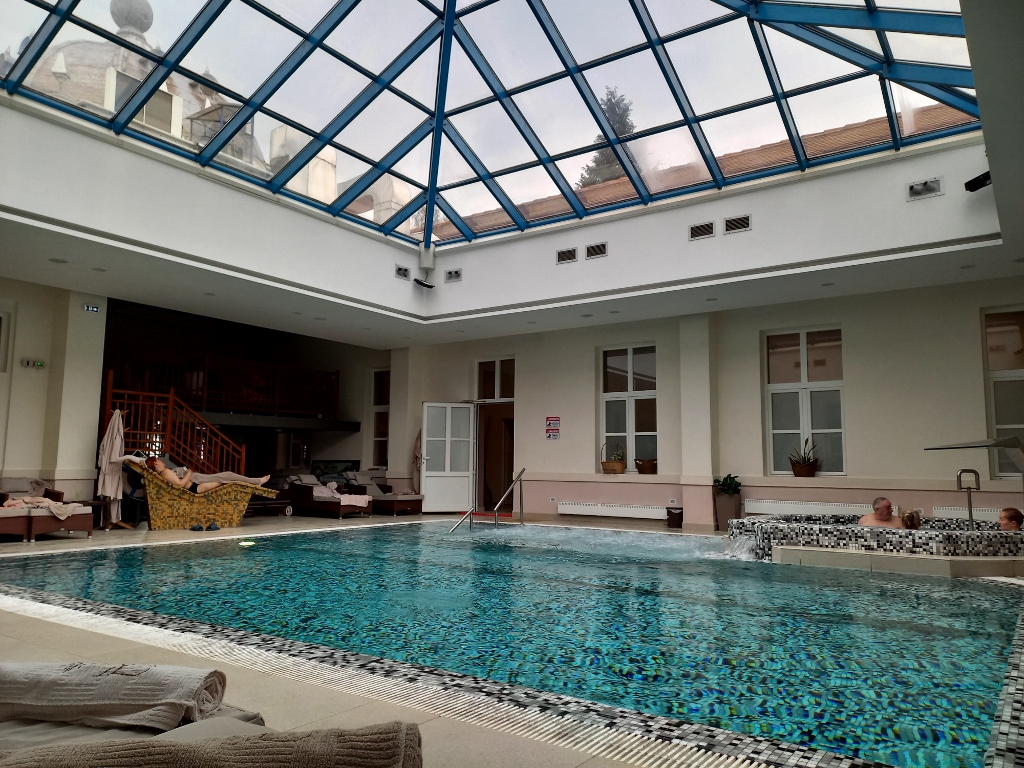 Part of the Wellness Centre
Part of the Wellness Centre
At the Spa Park, there is also a very beautiful building – Kur salon which is centrally located.
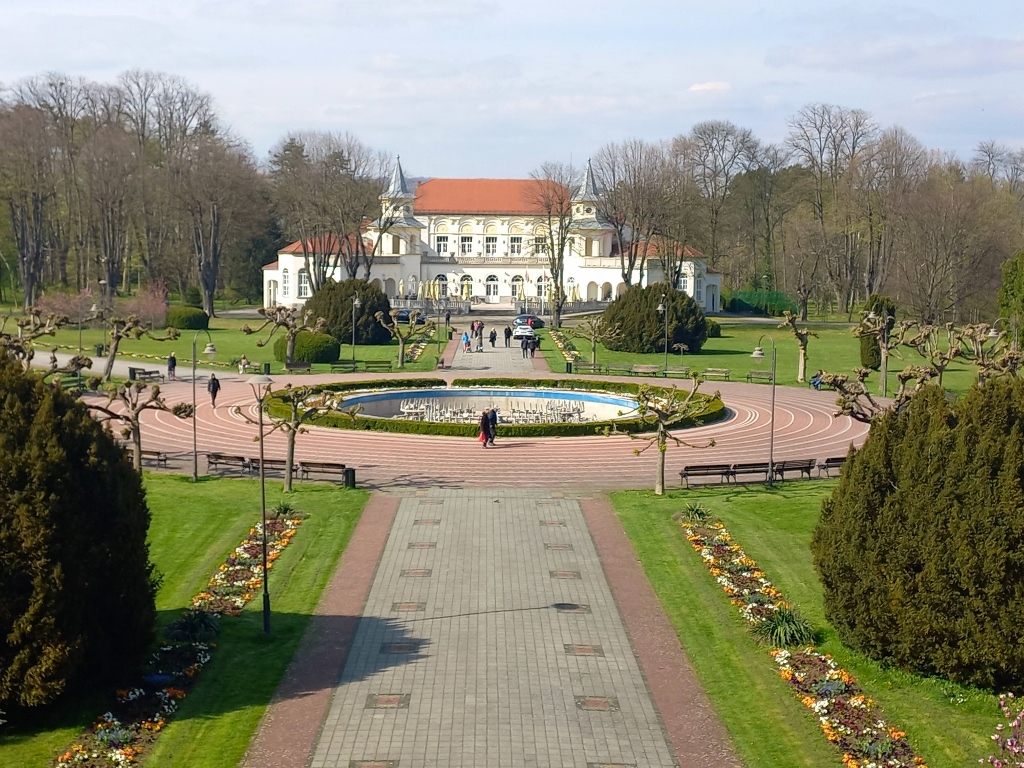 Kur salon in the middle of the Spa Park in Banja Koviljača
Kur salon in the middle of the Spa Park in Banja Koviljača
Kur salon was built as a ballroom hall in 1932. It was in quite a crumbly state for a while, but it has been renovated and nowadays there is a restaurant in it, with a very beautiful terrace overlooking the central parts of the park.
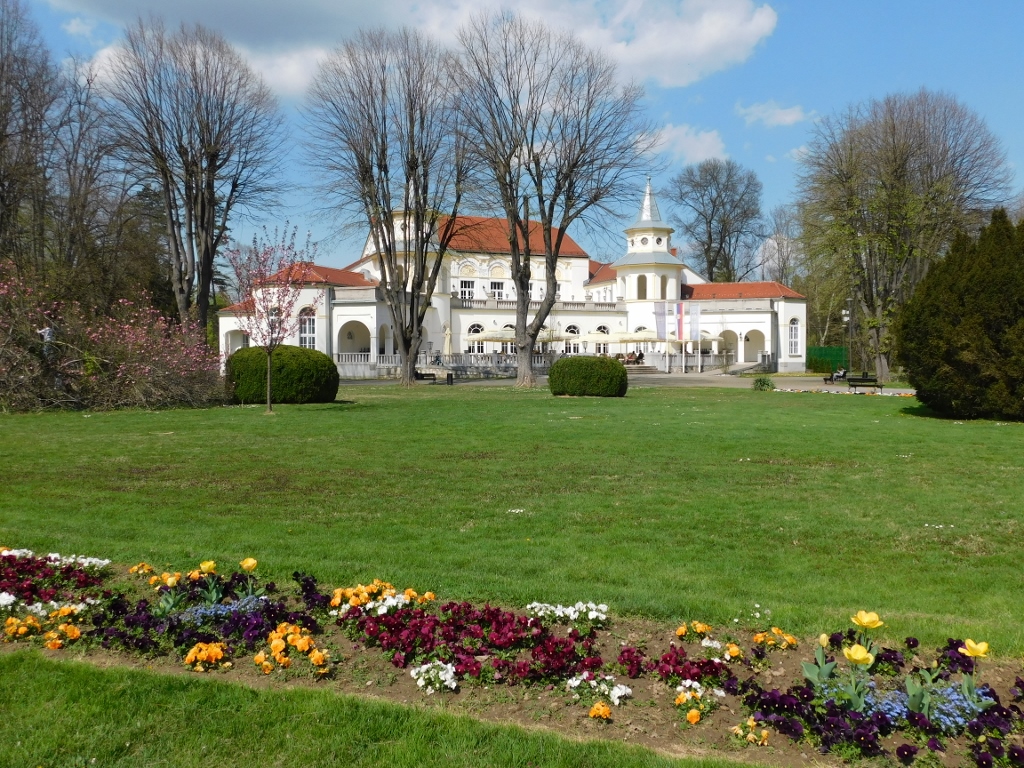 Kur salon in Banja Koviljača
Kur salon in Banja Koviljača
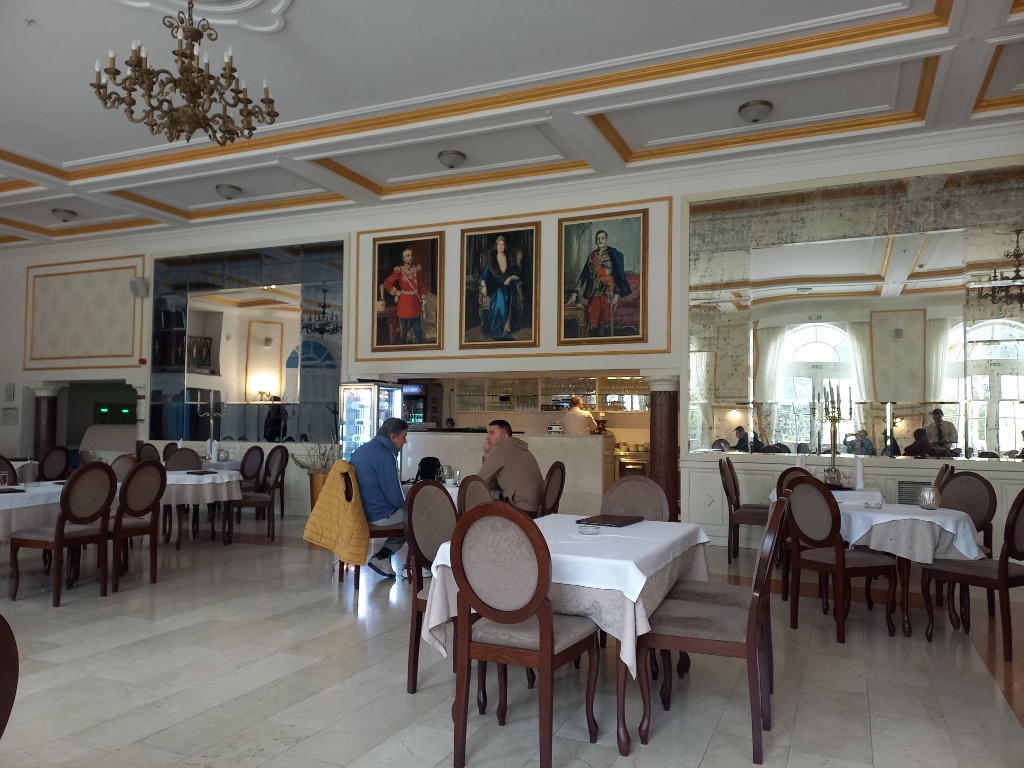 Kur salon in Banja Koviljača
Kur salon in Banja Koviljača
 View from the terrace of Kur salon in Banja Koviljača
View from the terrace of Kur salon in Banja Koviljača
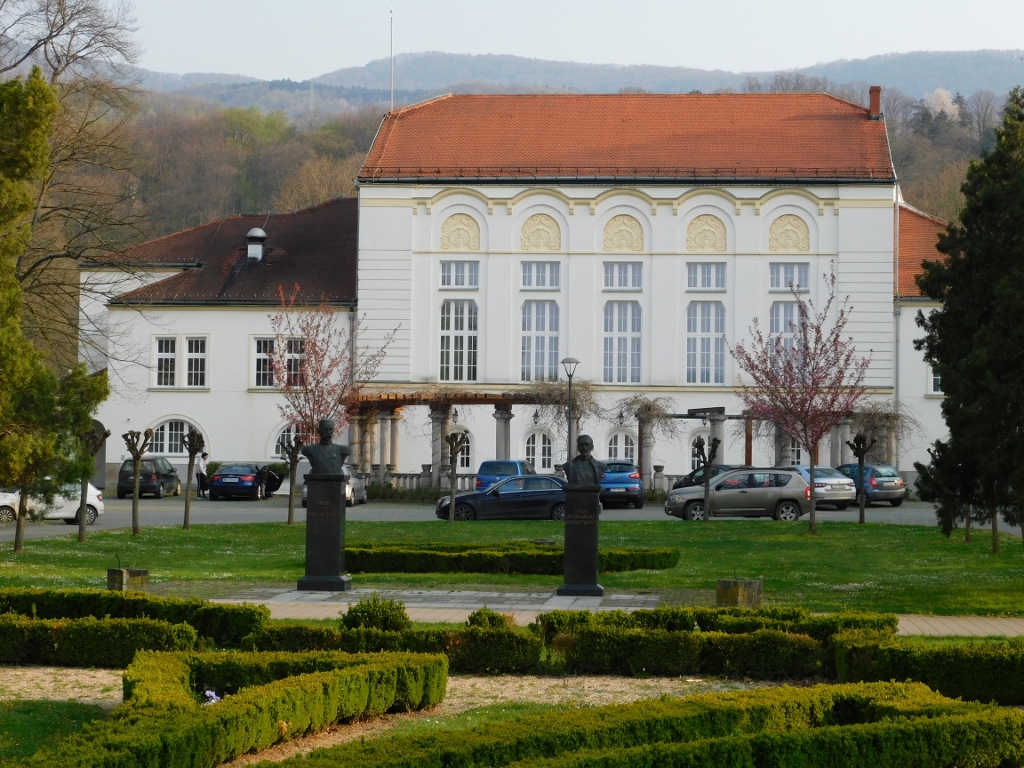 The front of Kur salon which is approached from the main street
The front of Kur salon which is approached from the main street
Bearing in mind the function of the town that developed here over time around the spa’s facilities, it is quite natural that different villas started to be built here, either private summer houses or as larger buildings used for the accommodation of spa patients. I gave myself a task, during the free time period between my medical treatments, to walk around the town and to try to find those villas that have with their architectural features or function deserved to be categorised as monuments of culture.
Still, one needs to be prepared that some of these buildings are in a very bad state and are rarely maintained as it would be appropriate. Without any desire to find excuses for anybody, but rather as an attempt to understand such state of affairs, there are several elements that need to be borne in mind.
Over the last hundred years or so, Serbia and this territory went through several war conflicts and their consequences, and here I primarily think of WWI and WWII. Also, different socio-political systems alternated and the impact was particularly visible when after WWII, during the period of socialism, some of these buildings were nationalised and different people who did not build these buildings were moved in and had no real concern about their state. In other words, they could not care less whether the facade was falling off or not. Then, in the case of a large number of property and houses throughout the country, not only in the case of the villas I’m talking about here, there are problematic property and legal relations, since we are rather laid back in this area and nobody has actually made us bring things in order. Because of this, a large percentage of the property may have several co-owners and most frequently very bad mutual relations. Needless to say, this reflects on the state of the buildings. And, finally, we are economically a poor country and when a bucket leaks through a hundred holes and you have only ten fingers, it is difficult to decide which holes need to be closed first.
Of course, not all the houses that are old and that are called villas are monuments of culture. But, while walking around the spa town and looking for those that I had in my list, I also noted some other interesting buildings.
Thus, for instance, along the west perimeter of the park, there are three large houses/villas that are over 100 years old and that were, I presume, a part of the spa complex back in the day, while now they appear abandoned and crumbly. I have even read that King Peter I himself stayed at Villa Koviljača.
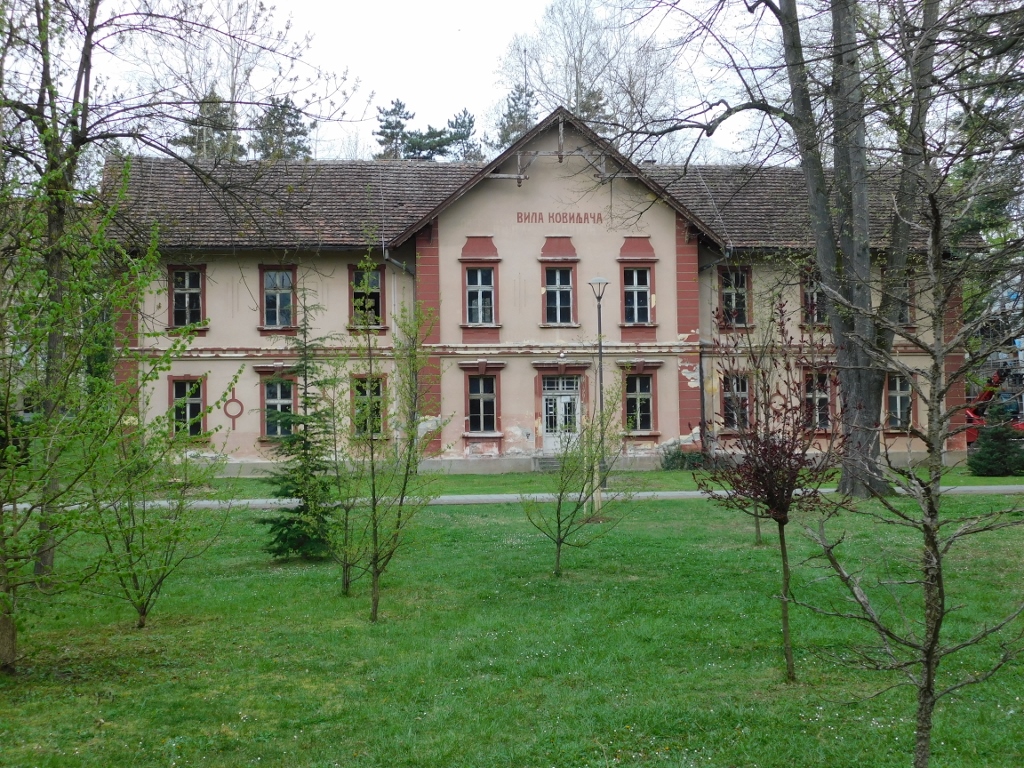 Villa Koviljača
Villa Koviljača
Admittedly, not all of them are currently in a bad state. One, Villa Podrinje, was covered in scaffolding at the time of my visit and as far as I could read on an information board, there was an ongoing reconstruction and turning of the villa into a modern hotel while preserving the exterior characteristics.
Once I walked towards the west parts of the spa town looking for a villa that is a monument of culture and along the way I noticed one that was not, but I still found it interesting. I think it would be really nice if the house were duly renovated. This is a house called “Villa Raj” (meaning Villa Paradise).
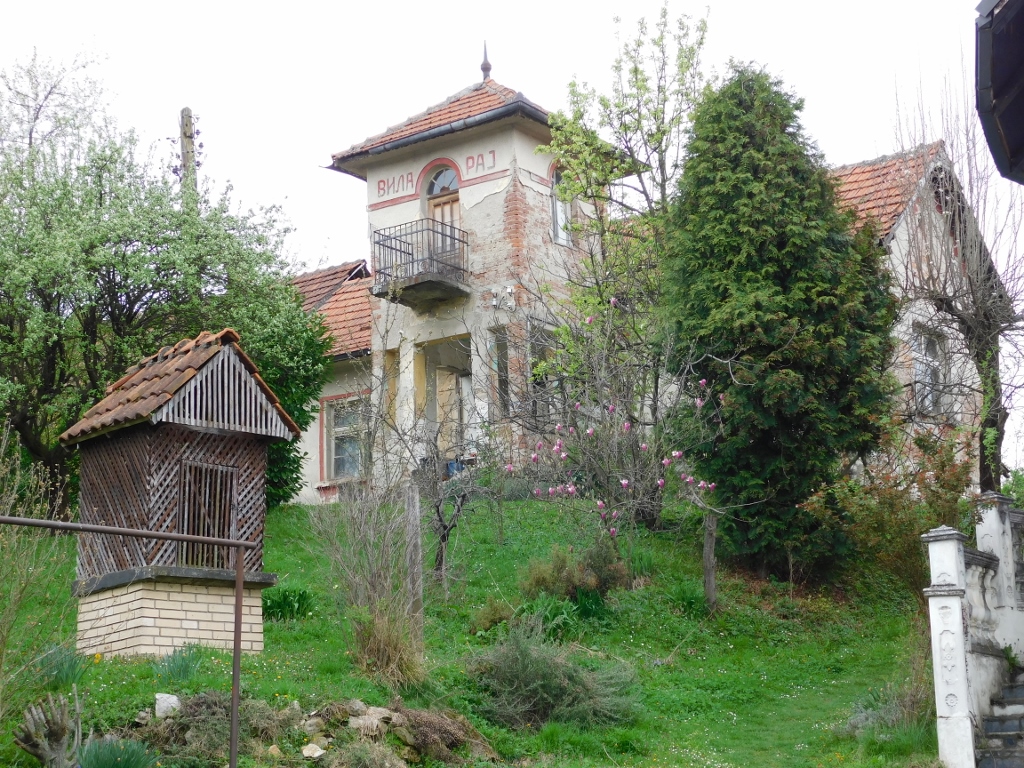 Villa Raj
Villa Raj
At some point, I noticed on an elevation above some residential houses one that appeared so worn down that I thought nobody lived there. By the way, later I changed up my mind and I think that in the part that is whitewashed somebody does live, at least temporarily, but I am not sure. As it turned out, this was precisely Villa Benkara in Ive Lole Ribara street that I was looking for.
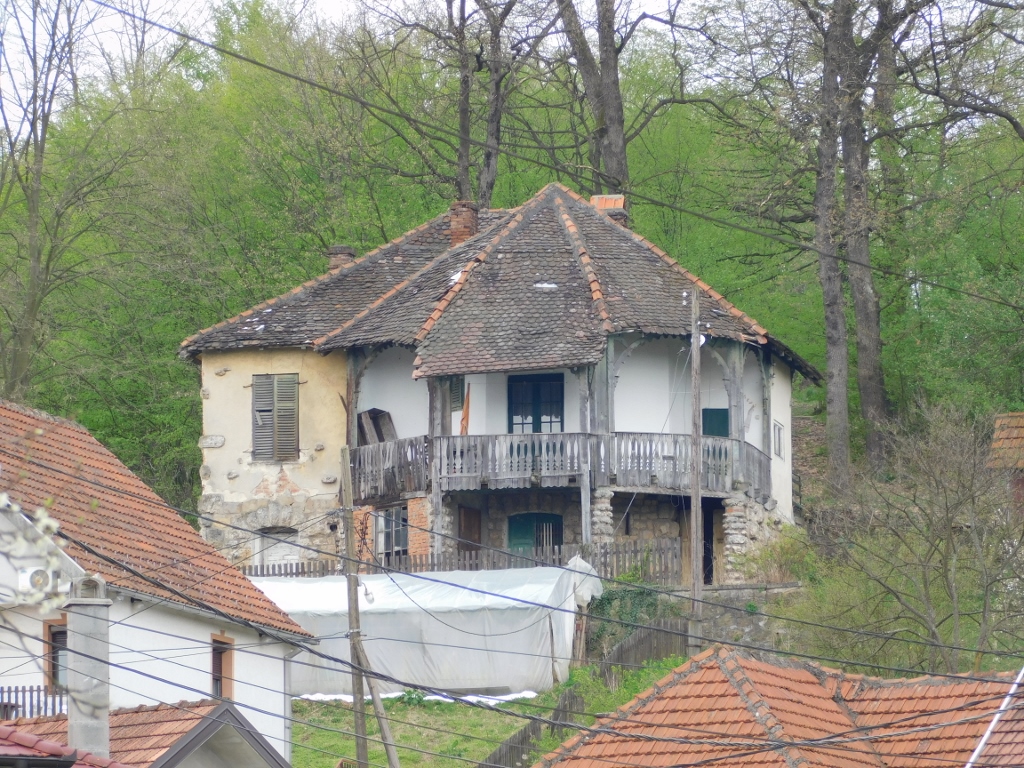 Villa Benkara
Villa Benkara
Villa Benkara is categorised as a monument of culture. It was built at the beginning of the 20th century using traditional architectural elements. Its owner was an English woman, Ethel Rose Benkert, who joined the Serbian army during WWI working as a volunteer nurse. After the war she decided to live here and the local inhabitants started to call both the villa and the whole neighbourhood are named after her, Benkara, admittedly with a slight error in the pronunciation.
Looking for this villa, I was slightly annoyed because there was no sign with the name of the street, but I used my mobile phone and things turned out fine in the end. However, the numbers of houses are also a rarity. As if it were prohibited by the law to have the street names and house numbers displayed. The local residents and the local postman know who lives where, so I guess nobody else bothers with this. Still, let me say that this is not typical of Banja Koviljača alone, but practically of entire Serbia and this is something I have no understanding for and really annoys me a great deal. But, nobody consults me.
I was lucky, though, because I came across a man who lives in this street and so I asked him about the villa. He expressed hope that I may be a representative of the “state” coming here to look into the state of the villa, but laughingly I said that I was just a crazy person who was keen on looking for old houses and monuments of culture. I don’t know if he understood my “hobby,” but in any case he told me which way to go and climb up to the house, so I did exactly as instructed.
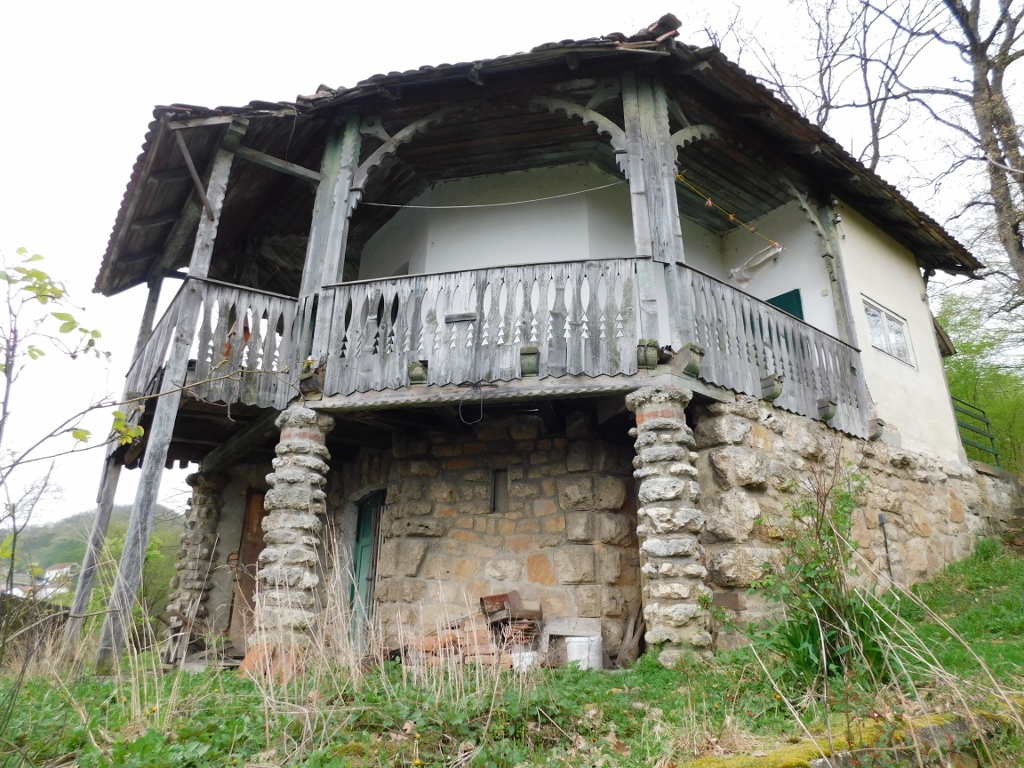 Villa Benkara
Villa Benkara
The architectural elements used in the construction of the house are very picturesque and rather unusual, e.g., the polygonal ground plan and porch or the stone decoration. Unfortunately, the villa is in a very bad state today.
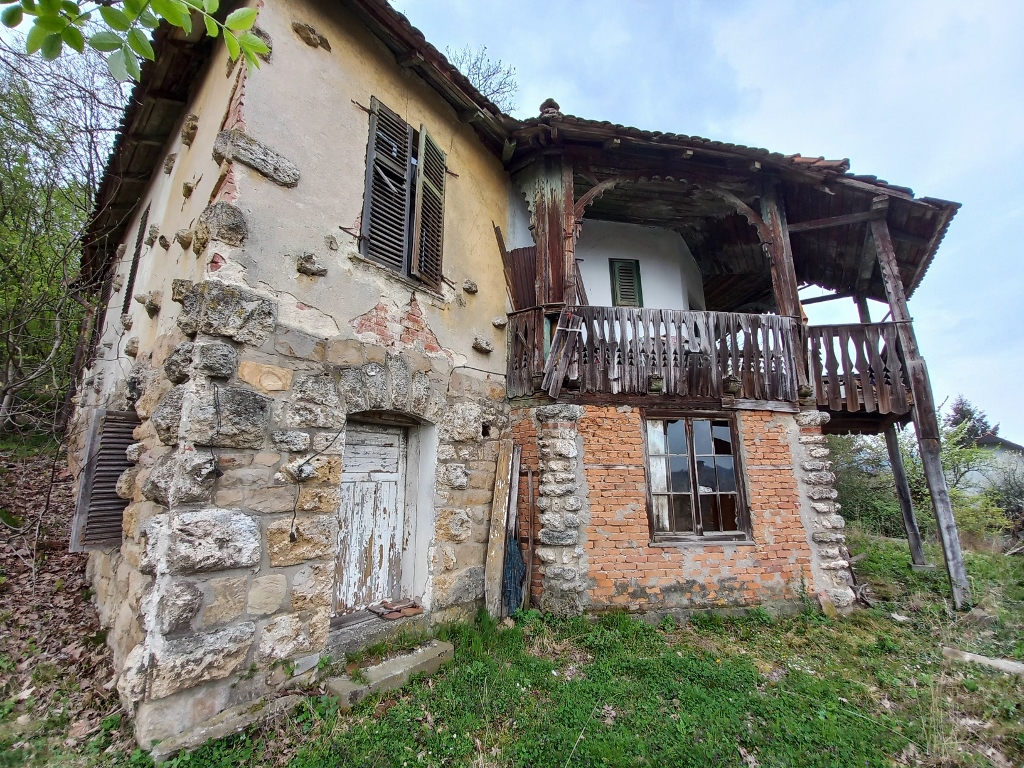 Villa Benkara
Villa Benkara
Also in the west part of Banja Koviljača there are two more villas that are considered the monuments of culture. I did not expect to come across restored villas here either and this was exactly the state of affairs, but I even did not mind that a lot.
Although I would really like it if ALL the monuments of culture in my country were restored and in prime condition, I can understand that there are problems with financing, as well as the function of the buildings in case of their restoration, since this also needs to be taken into consideration.
But... As I’ve already mentioned, I really minded that the street names and the house numbers were mostly missing, so I used the map from my mobile phone in order to locate the street and once there when I would notice a large house I would compare its appearance with the description I had in my materials.
An additional problem was that my materials provided, as it turned out, wrong or incomplete addresses or the position of different villas and so I completely skipped one (Villa Sunčica) becoming aware of it only once I came back home (in other words, there are THREE villas in this part of the town that are cultural monuments). What was shocking to me was that I had taken over these materials from the site of the official institution in charge of the monuments of culture in Serbia.
What I want to say is that Indiana Jones had it easy. He was not in my shoes. Admittedly, nobody chased, hunted or wanted to kill me, but as far as going on a quest for a “treasure” is concerned, he is a pure amateur in comparison to me.
So, one of the villas that are considered sufficiently important to be declared a monument of culture is Villa Cer also called Desanka. To start with, it was built on a very nice spot – an elevated flat area close to the centre of the spa town. It is adorned by an access path with wide staircase and an imposing portico the pillars of which carry a spacious balcony on the upper floor.
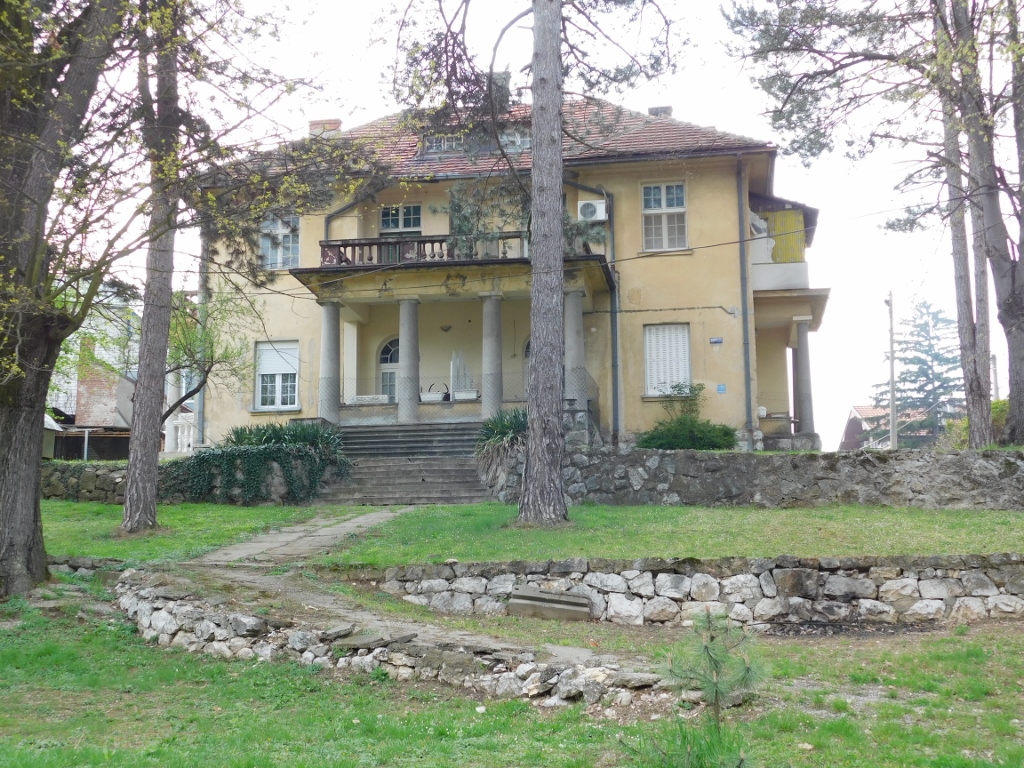 Villa Cer (Desanka)
Villa Cer (Desanka)
This was a private, family holiday home and before WWII it witnessed vivid social life, while the visitors were often the respected individuals from bigger towns. This is, for instance, one of the houses that were turned into residential buildings for several families around the middle of the 20th century. Also, over time, there were some additional elements built without any control, which alongside long-term lack of maintenance destroyed the previously representative appearance of the villa.
Literally across the street from the side facade of Villa Cer, there is another important building and that is Villa Ankica.
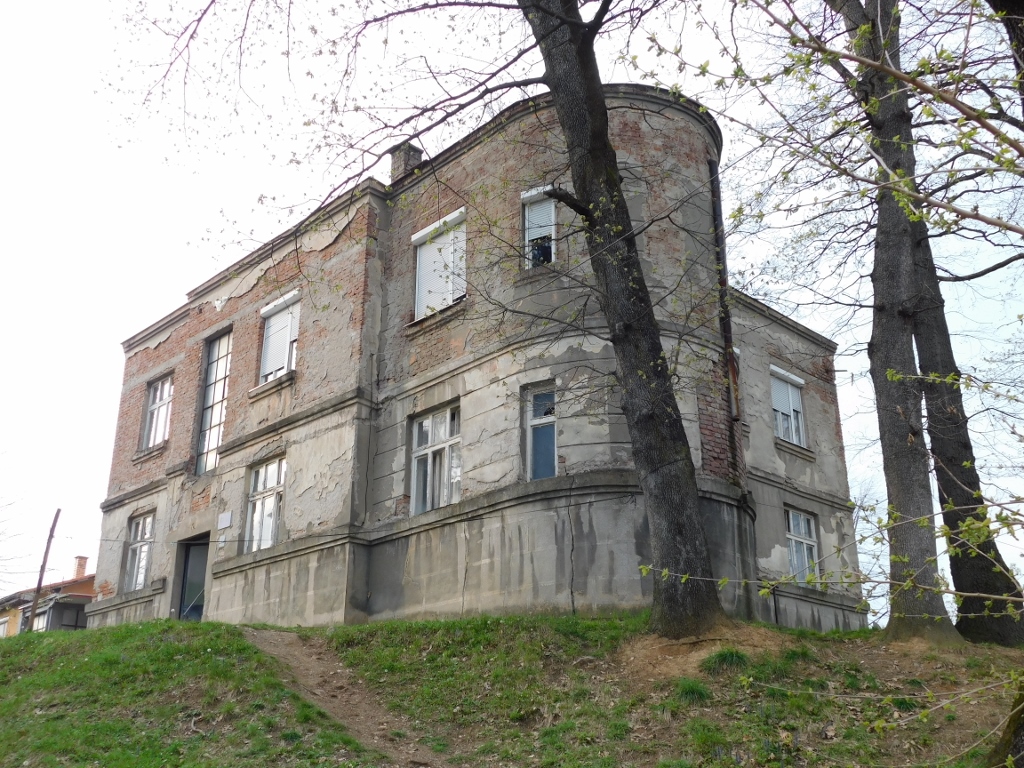 Villa Ankica
Villa Ankica
The idea for the construction of this villa was that it housed a sanatorium for the accommodation and medical treatment of the users of the spa. The villa was built on a very pretty and imposing location, and in terms of architecture it brought together the elements of academism and modernism. Precisely the cylindrical part of the building on the corner section of the street-facing facade, seen in the foreground in the photo above, represents an element of modernism. Originally, the house included a flat for the physician, his office, rooms for the patients and auxiliary rooms, but here too, after WWII, there was a change of the purpose and the villa was turned into a residential building. Nowadays, it is in a very decrepit and neglected state.
There is another villa in the west part of the spa town that is not a monument of culture at the national level, but it is locally very well known and in the recent times, finally and luckily, it was fully restored and on that occasion its exterior appearance was brought back, while the interior was accommodated and turned into a small hotel. It even had a small swimming-pool for the guests added within the plot of land. This is Villa Samokres.
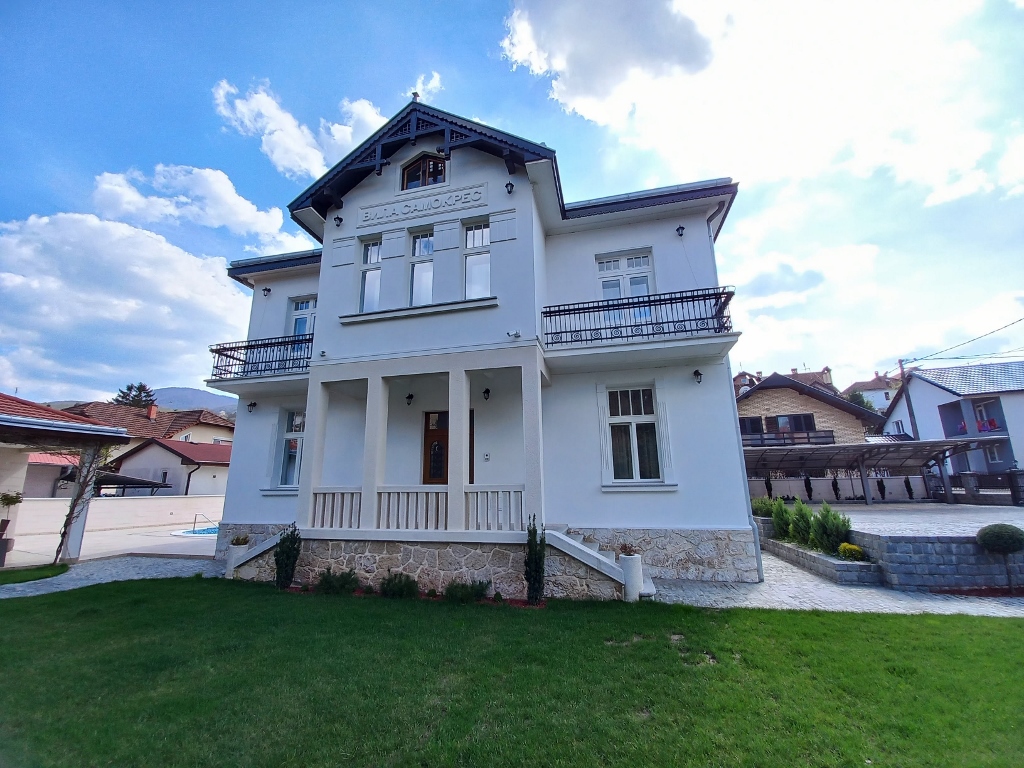 Villa Samokres
Villa Samokres
By the way, because of the contemporary development of the Serbian language, the name of the villa can colloquially be interpreted as “self-banging,” but it needs to be said that the word “samokres” actually means a flint used for firing an old rifle or a flintlock.
While walking around the west parts of Banja Koviljača, I also noticed some other houses that I found most interesting. For instance, two “twin” houses, as well as one that was exceptionally simple, ordinary, but which, with its beautifully lit lawn in the front yard and the porch with a wooden fence, seemed to me quite fairy-tale-like.
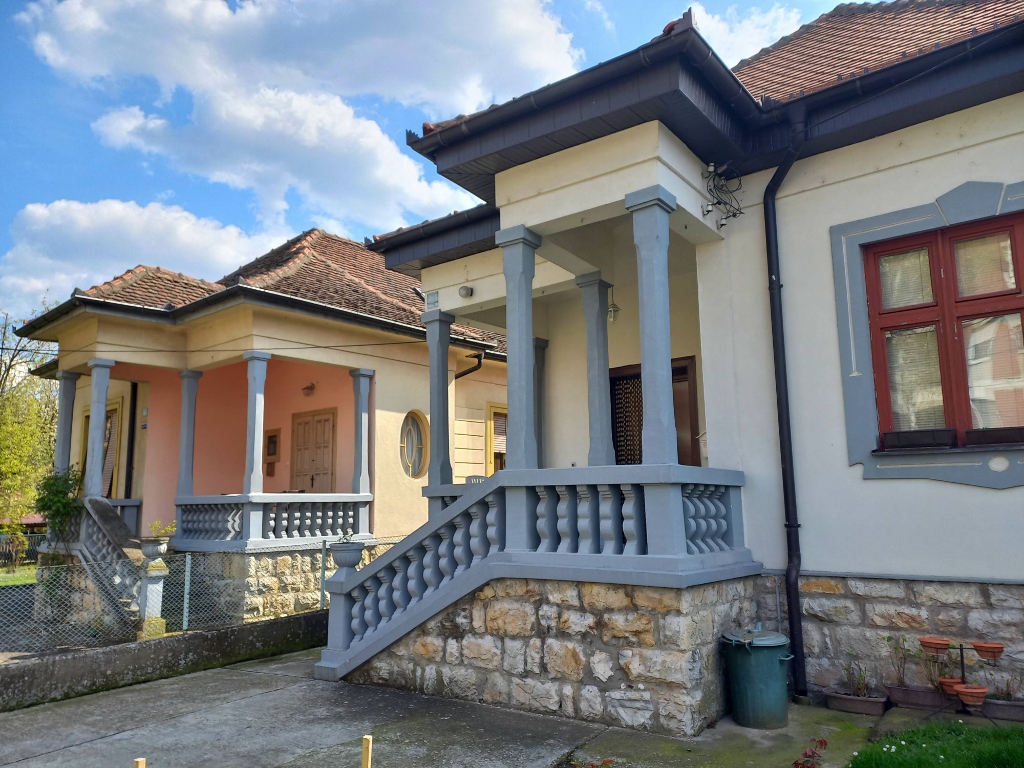 Houses in Banja Koviljača
Houses in Banja Koviljača
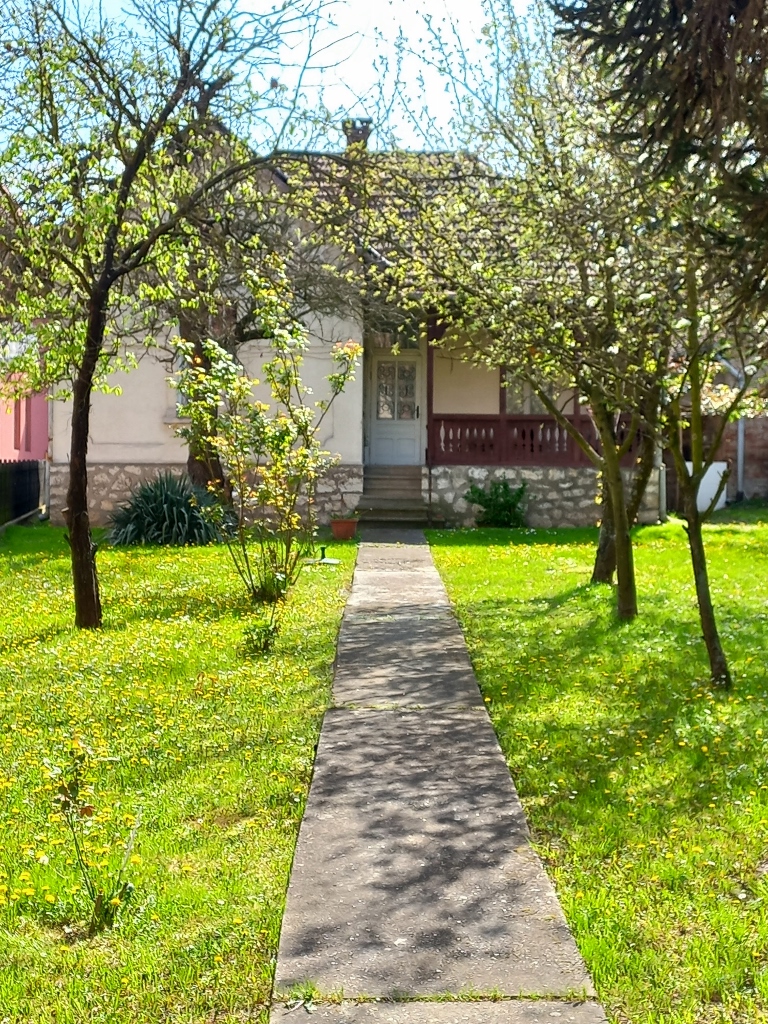 House in Banja Koviljača
House in Banja Koviljača
I also passed by a building in this part of Banja Koviljača which in addition to being in a very crumbly state, also seemed to have been built a long time ago. I have no idea what its function was, but for some reason it seems to me like an old bus terminal. I imagine the numbers seen on the facade being put there in order to mark the “platforms” from which the buses left.
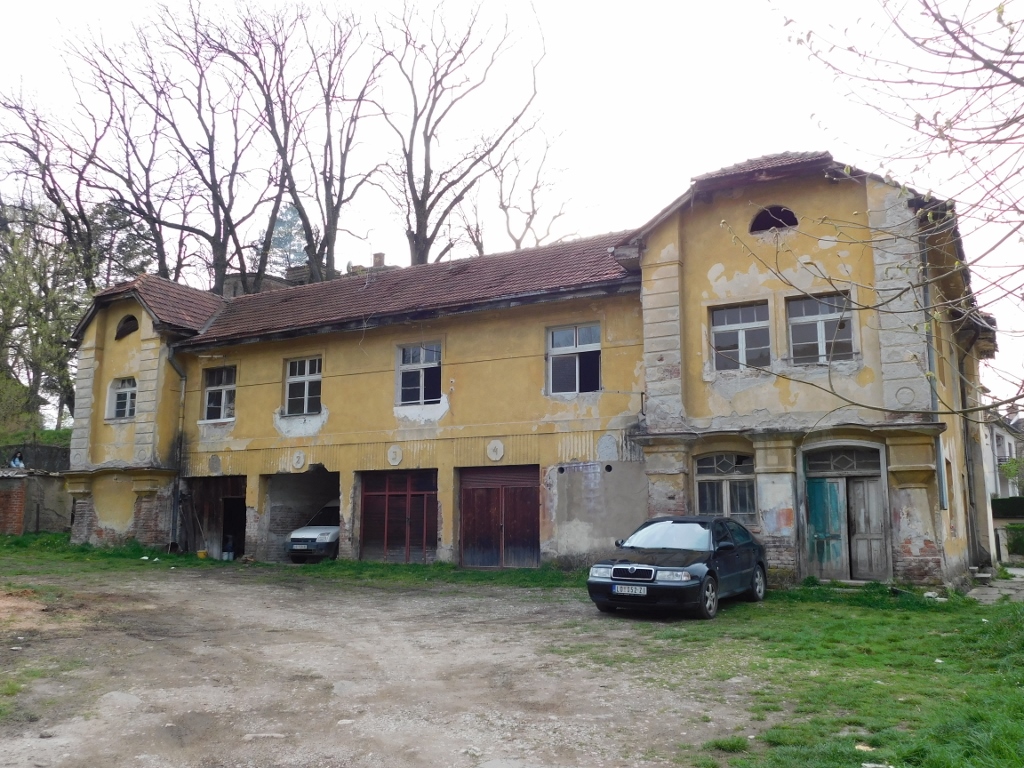 Building in Banja Koviljača
Building in Banja Koviljača
And so I walked around the spa town in-between my medical treatments and, more or less successfully, managed to locate different buildings that were a part of the past, but for which it would be quite nice if we found a way to make them a shining part of the present as well.